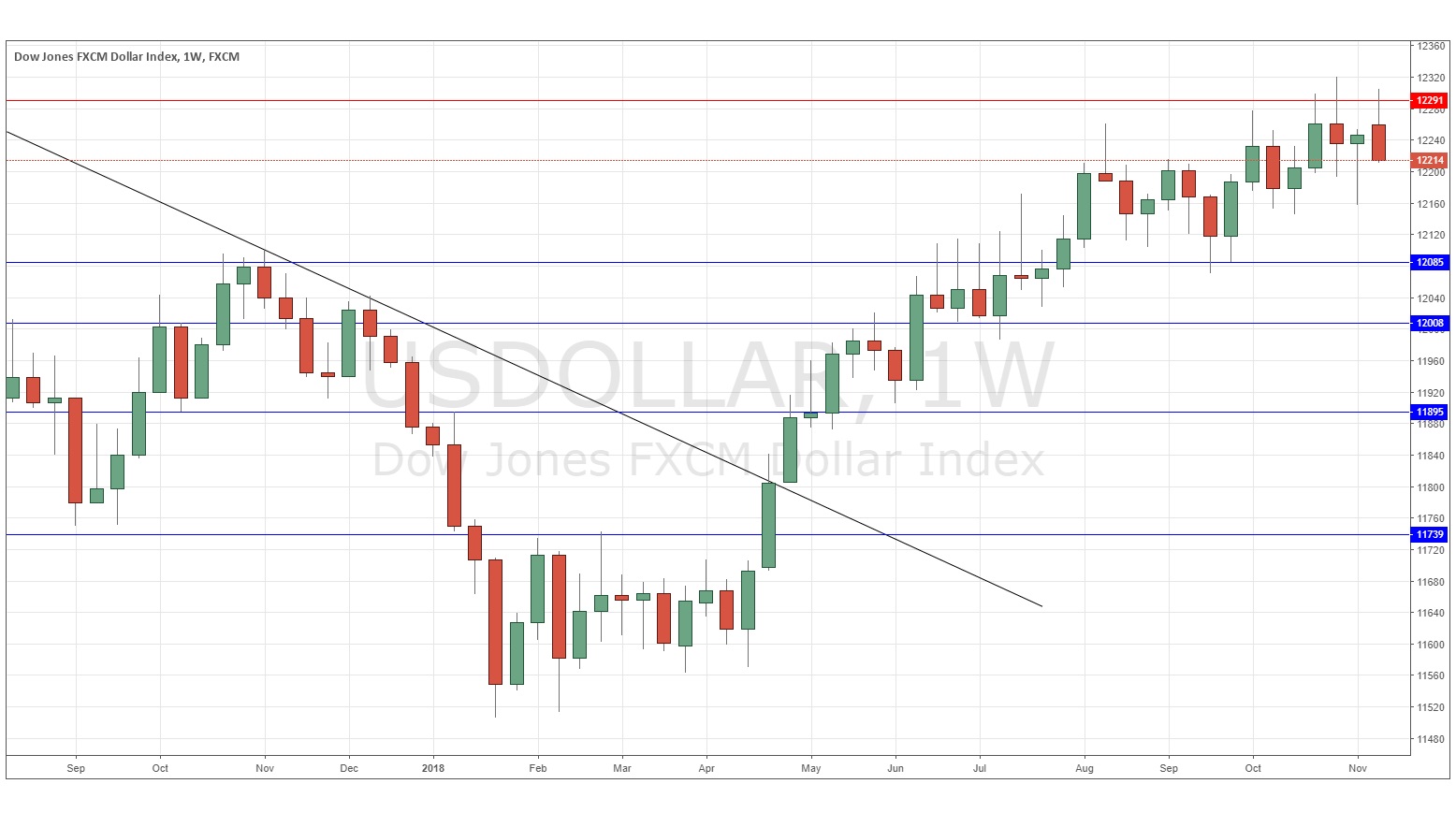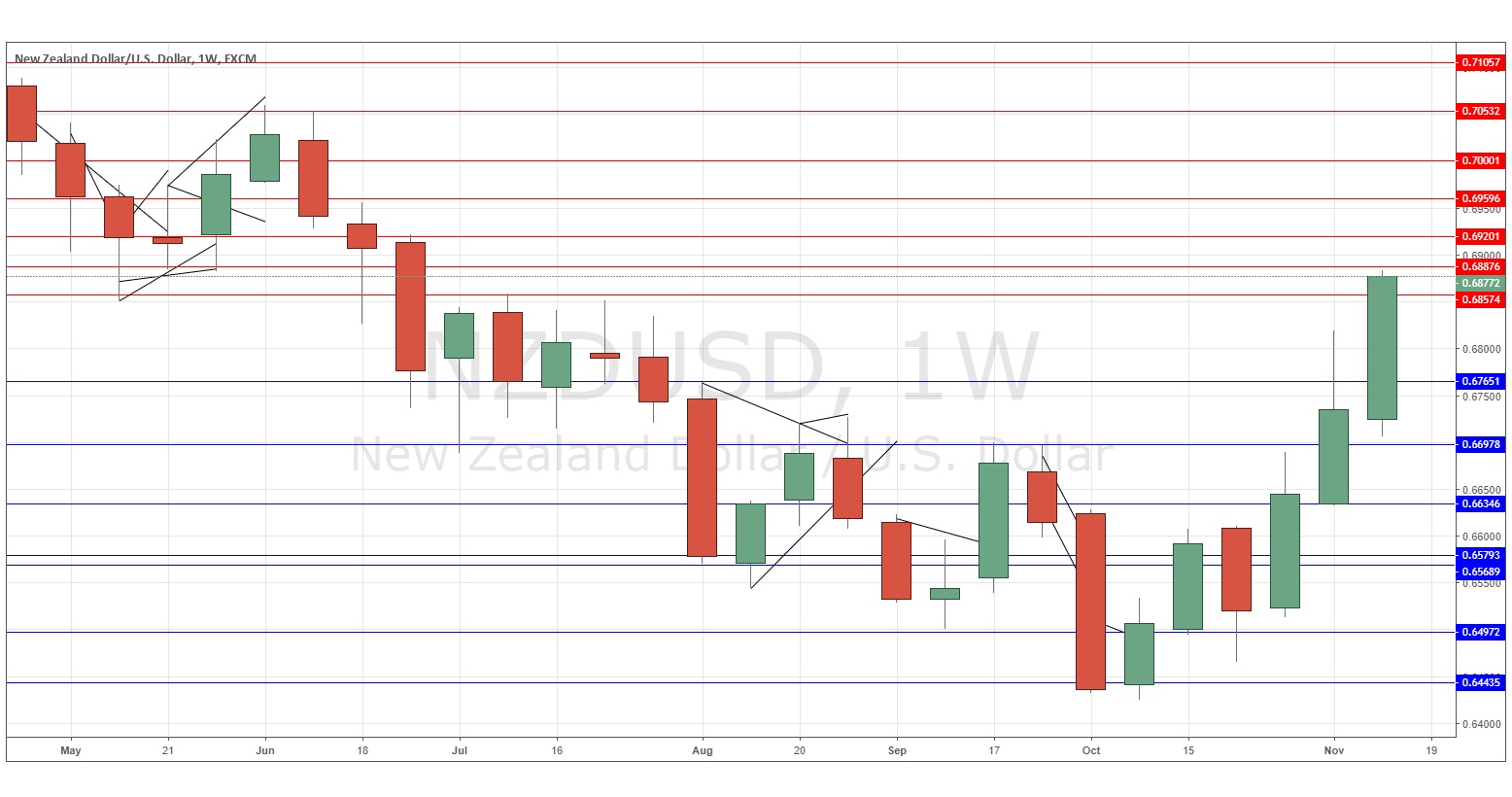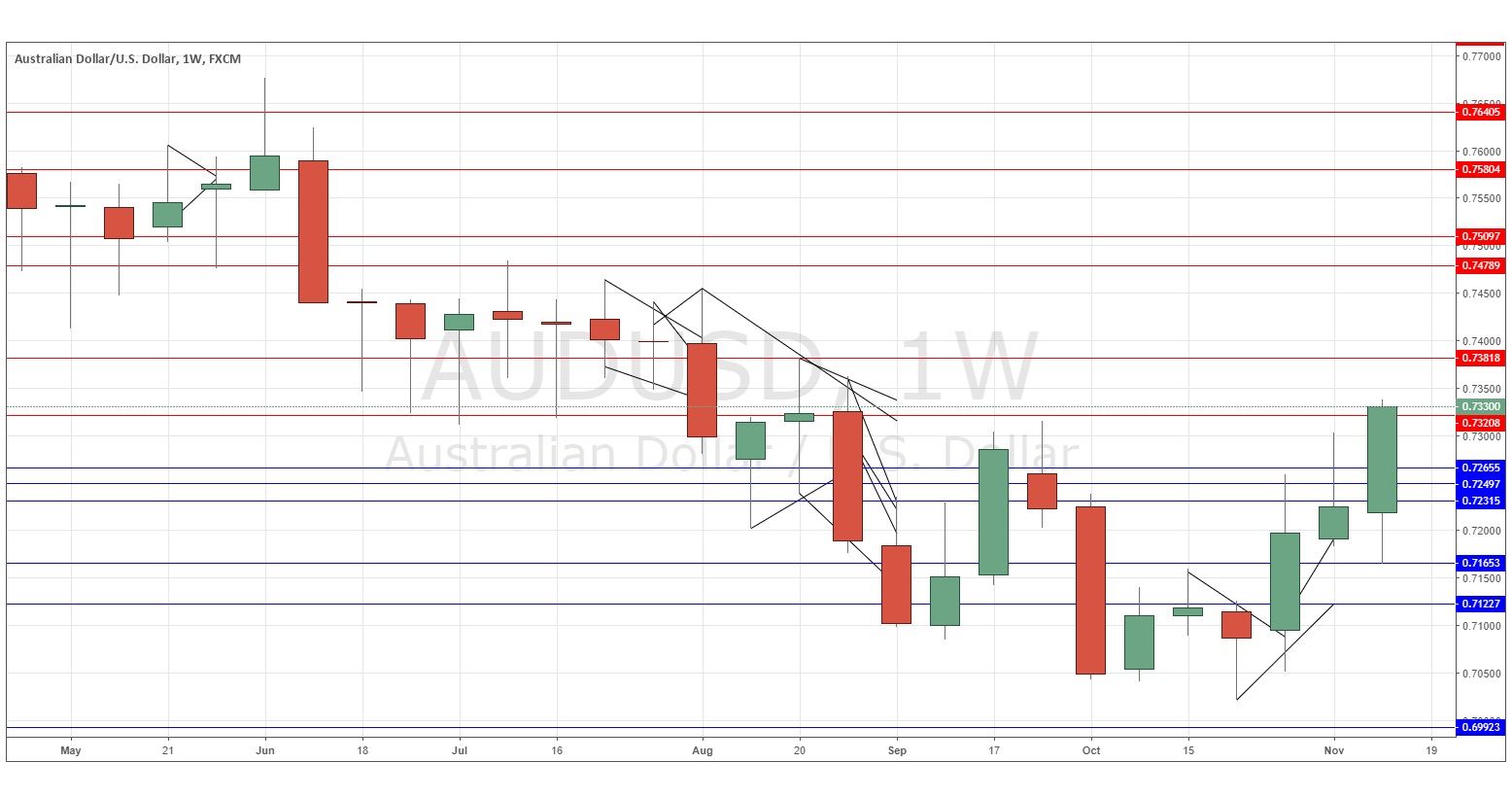The difference between success and failure in Forex trading is very likely to depend upon which currency pairs you choose to trade each week, and not on the exact trading methods you might use to determine trade entries and exits. Each week I am going to analyze fundamentals, sentiment and technical positions in order to determine which currency pairs are most likely to produce the easiest and most profitable trading opportunities over the next week. In some cases it will be trading the trend. In other cases it will be trading support and resistance levels during more ranging markets.
Big Picture 18th November 2018
In my previous piece last week, I forecasted that the best trades would be short of the EUR/USD and Gold and long of USD/CAD. Unfortunately, these were all losing trades. EUR/USD rose by 0.71%, USD/CAD rose by 0.47%, and Gold rose by 1.05%, giving an averaged loss of 0.74%.
Last week saw a rise in the relative value of the New Zealand Dollar, and a fall in the relative value of the British Pound.
Last week’s Forex market was dominated by news that the British government had approved a draft Brexit deal and ongoing uncertainty as to whether the deal could secure the approval of the British Parliament. It seems likely that the Pound will fluctuate as long as the uncertainty over the Brexit outcome persists.
very positive New Zealand economic data, as well as a slightly hawkish FOMC release which boosted the U.S. Dollar. The bullish USD trend is surviving.
This week is likely to be dominated by forthcoming Australian and Canadian data, as well as British political instability.
Fundamental Analysis & Market Sentiment
Fundamental analysis still tends to support the U.S. Dollar, as American economic fundamentals continue to look strong. Sentiment seems to be still in favor of the U.S. Dollar as despite quite strong recent selloffs in the stock market, the economic fundamentals are still widely seen as good, although there is now an increasing belief that the Federal Reserve should hold off on rate hikes to over over-cooling the economy: some economists are now arguing that U.S. growth is cooling off already. Fundamentals remain bearish on the Japanese Yen, but this currency can still benefit from safe-haven “risk off” money flow.
The week ahead in the market is likely to be dominated by the British Pound, and the New Zealand and Australian Dollars.
Technical Analysis
U.S. Dollar Index
The weekly price chart below shows that after last week’s bullish candlestick, this week printed a bearish candlestick with a pronounced upper wick rejecting the resistance level at 12291. The price remains within a multi-week consolidation between support and resistance and I have no strong confidence as to short-term direction, although the edge is still technically in line with the long-term bullish trend, which remains intact. However, it is looking more likely that the long-term bullish trend may be finally coming to an end, if not a reversal.
NZD/USD
The weekly chart below shows last week produced a very strong bullish candlestick with above-average volatility that closed right by the top of its range. This is a continuation of the healthy rise we have seen over the previous few weeks and brings the price to its highest close in more than 20 weeks. These are bullish signs and the NZD is currently the strongest of all the major global currencies.
AUD/USD
The weekly chart below shows last week produced a very strong bullish candlestick with above-average volatility that closed right by the top of its range. This is a continuation of the healthy rise we have seen over the previous few weeks and brings the price to its highest close in 15 weeks. These are bullish signs however it should be noted that the NZD is currently the strongest of all the major global currencies, so long NZD/USD has higher probability than this.
Conclusion
Bullish on the NZD/USD and AUD/USD currency pairs.




